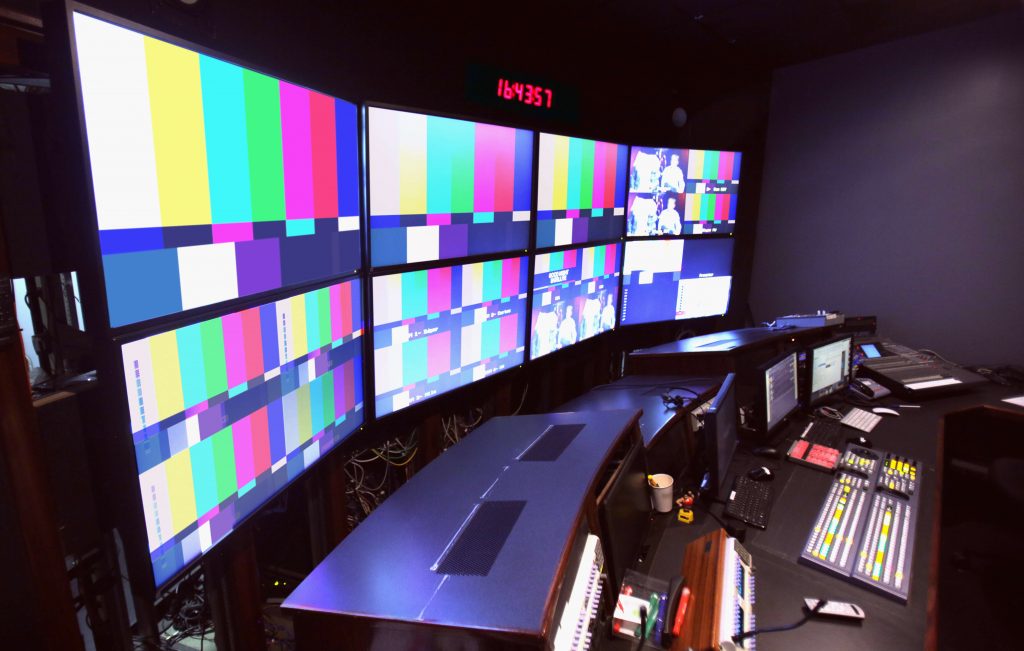American Sound installs world-class, professional audio-visual equipment for a wide range of companies throughout the United States.
Today, our team answers several frequently asked questions about video walls, those beautiful digital displays that take up an entire wall in a room.
What is a video wall?
A video wall consists of multiple displays to create a single, large cohesive image, series of images, or multiple images simultaneously.
What types of video walls are there?
Video walls come in a variety of display technologies, including:
- LCD, built with narrow-bezel or bezel-less (seamless) displays made from large displays (55 inches or more) for high brightness and an excellent tiled performance.
- LED video walls deliver crisp, seamless images scalable to any size or shape. Imagery looks fantastic at any angle with LEDs.
- Projection cube (AKA rear projection), where the video wall has an image projected from behind a screen and onto the wall.
- Blended projection occurs when images are projected onto a screen from the front using multiple projectors to form a seamless output on a large display surface.
How do you build a video wall?
Constructing and installing a video wall takes several steps.
- First, talk to a professional installer like American Sound. Video walls require specific things in place to maximize space and effectiveness.
- Visit the site. Once you choose an installer and talk to them, it’s time to visit the site. While there, your company will take measurements and audit the infrastructure you have in place (like power lines and conduits) as well as the strength of the wall.
- Order your video wall equipment. Installers will order your video wall equipment, customized to your needs.
- In a few weeks, installers will come to your facility and install the video wall, make all of the connections, and install the software on a computer while teaching you how to change the settings on the visual presentation.
- Enjoy your brand-new, state-of-the-art video wall!
- If you have any questions or comments, your chosen installer should have robust customer support and service after the installation. These things should be included in your package.
What is a seamless video wall?
Seamless video walls merge pixels between displays using very narrow bezels (frames) and bezel compensation software. You can design a video wall of any size using a seamless system.
How does a video wall system work?
Specialized software and a dedicated video processor blend images across multiple screens into a seamless presentation. Images can be one huge, cohesive unit or you can showcase multiple images across various panels.
What are the pros of using LCD monitors in a video wall?
Advantages of LCD monitors include:
- Lower price point because of being on the market for a longer time.
- Sharp details.
- High resolution.
- Reliable technology.
What are the pros of using LED monitors for a video wall?
- No bezels for a better seamless presentation.
- Extremely bright lighting.
- Energy-efficient.
- Better color accuracy.
- Great refresh rates.
- Longer life.
How long does an LCD video wall last?
Around 30,000 hours, or eight years at 10 hours of use per day.
How long does an LED video wall last?
Around 50,000 hours, or 15 years at 10 hours per day.
What factors go into the costs of a video wall?
- Type of technology used (LCD, LED, rear projector, blended projector).
- Size (small, medium, large).
- Number of controllers and processors needed.
- Supporting infrastructure such as outlets, braces, and wall supports.
- Cost of ownership, including power usage and cooling fans.
- Service and repair costs.
What are the basic components of a video wall system?
There are three basic parts:
- Monitors or projectors that create the images.
- Dedicated processor that manages the video wall’s physical components.
- Software utilized by the processor.
Who should install my video wall?
Professional installation is absolutely the best option for your video wall.
Contact us for more information, or call (859) 261-9024. We’ll talk to you, come out to your place, and assess what you have before giving you a quote.

